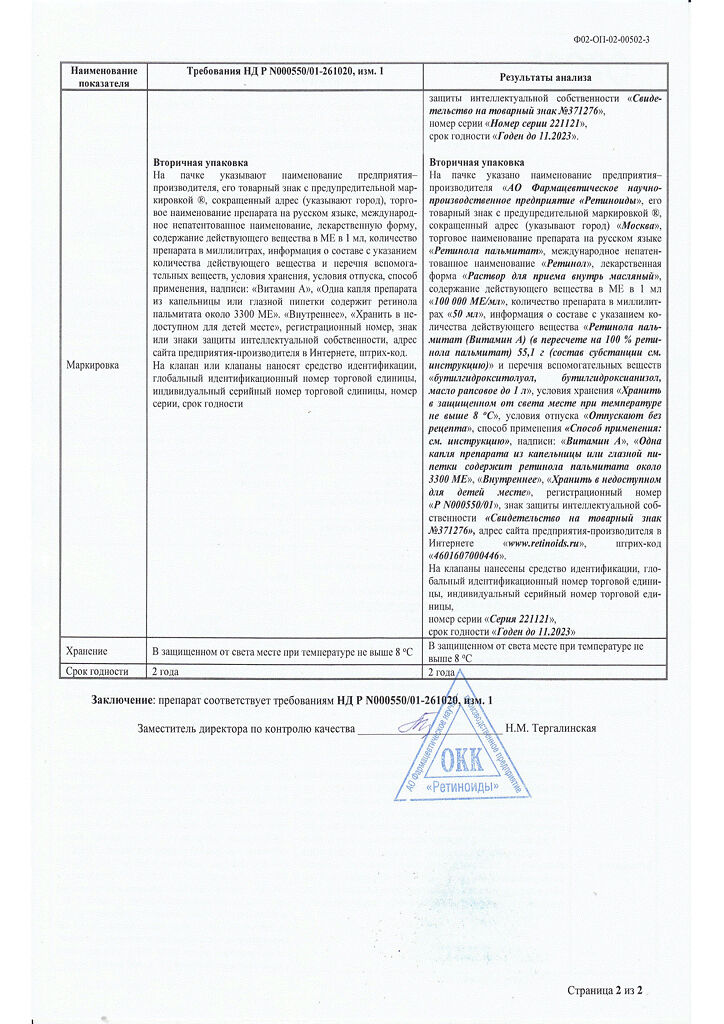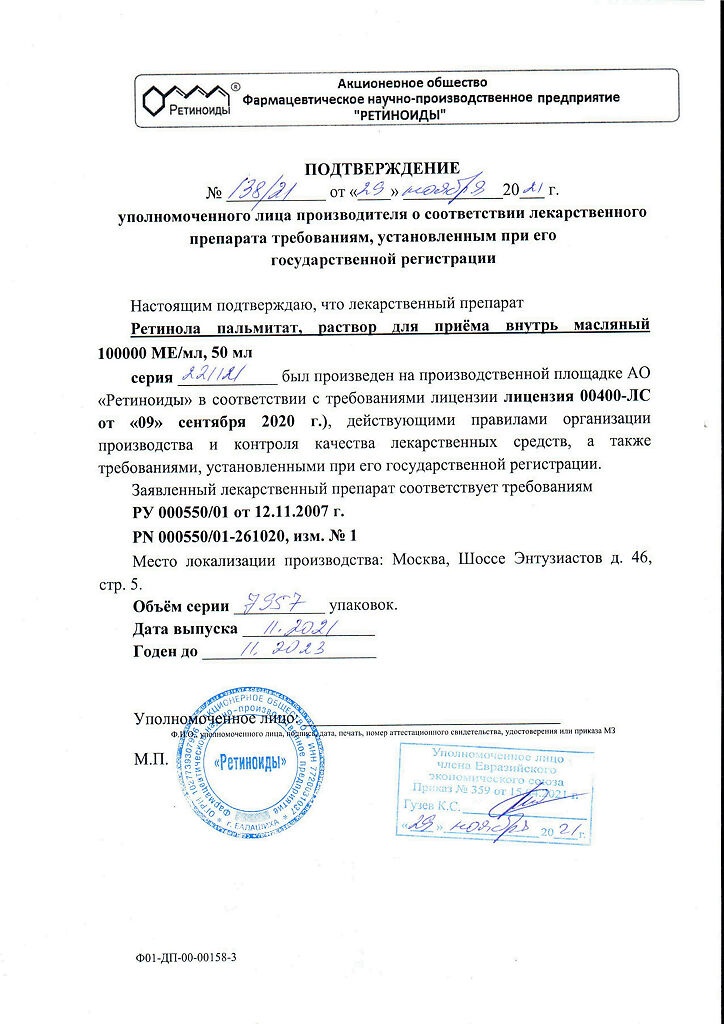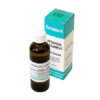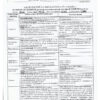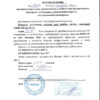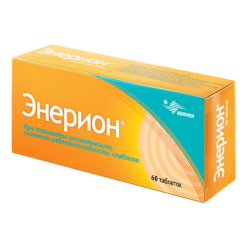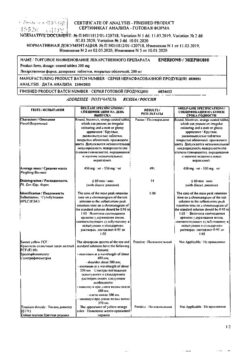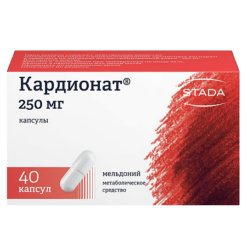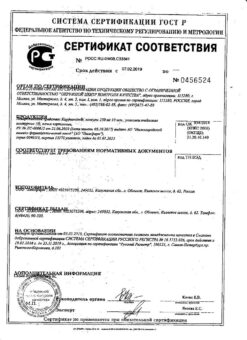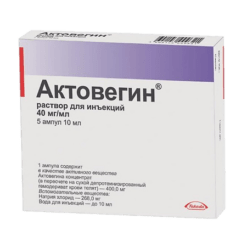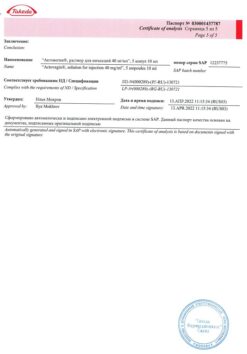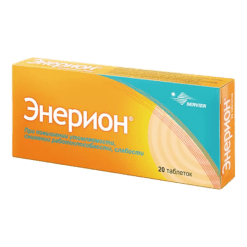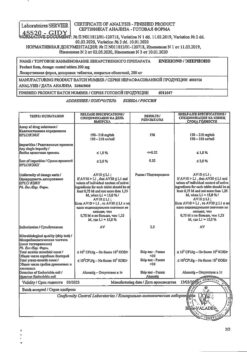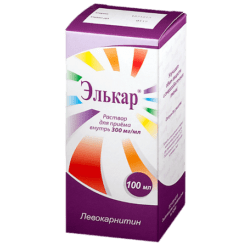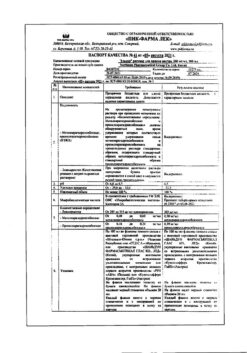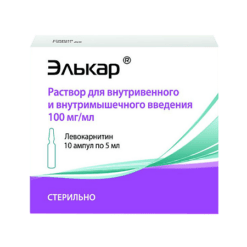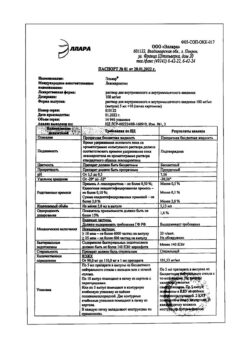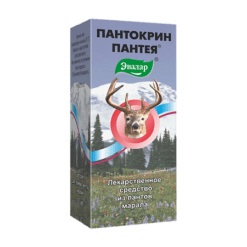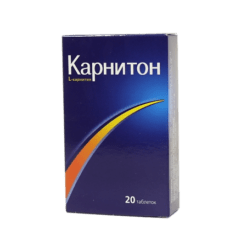No products in the cart.
Retinol palmitate, oil 100000 me/ml 50 ml
€8.87 €7.76
Description
Retinol palmitate is a replacer of vitamin A deficiency and regulates tissue metabolism.
In the skin it inhibits the processes of keratinization, increases the proliferation of epitheliocytes, rejuvenates cell populations, reduces the number of cells following the path of terminal differentiation.
The general action is conditioned by intensification of myelopoiesis, macrophages function, reactions of humoral and cellular immunity which promotes activation of protective forces of the body.
Pharmacokinetics
It is absorbed from the intestine and deposited in the liver.
Indications
Indications
Hypovitaminosis, vitamin deficiency A. In complex therapy:
infectious and inflammatory diseases (measles, dysentery, influenza, tracheitis, bronchitis, etc.),
skin lesions and diseases (cracks, ichthyosiform erythroderma, acne, hyperkeratosis, seborrheic dermatitis, psoriasis, neurodermatitis, some forms of eczema, skin tuberculosis),
eye diseases (retinitis pigmentosa, hemeralopia, xerophthalmia, keratomalacia, eczematous eyelid lesions),
gastrointestinal diseases (erosive gastroduodenitis, gastric and duodenal ulcers),
liver cirrhosis.
Prescribed to prevent the formation of stones in the biliary and urinary tracts.
Pharmacological effect
Pharmacological effect
Pharmacotherapeutic group: Vitamin.
ATX code (A11CA01)
Pharmacological properties
Vitamin A has a general strengthening effect, normalizes tissue metabolism, participates in redox processes (due to the large number of unsaturated bonds), in the synthesis of mucopolysaccharides, proteins, lipids, in mineral metabolism, and in the processes of cholesterol formation. Enhances the production of lipase and trypsin, enhances myelopoiesis and cell division processes.
Has a positive effect on the function of the lacrimal, sebaceous and sweat glands; increases resistance to diseases of the mucous membranes of the respiratory tract and intestines; increases the body’s resistance to infection. It enhances the division of epithelial skin cells, rejuvenates the cell population, inhibits keratinization processes, enhances the synthesis of glycosaminoglycans, and activates the interaction of immunocompetent cells with each other and with epidermal cells. Stimulates cell regeneration. Participates in photoreception processes (promotes human adaptation to darkness). The local effect is due to the presence of specific retinol-binding receptors on the surface of epithelial cells.
Special instructions
Special instructions
Do not take multivitamin complexes containing vitamin A at the same time to avoid overdose.
Active ingredient
Active ingredient
Retinol
Composition
Composition
Active ingredient: retinol palmitate (vitamin A) (in terms of 100% retinol palmitate) – 55.1 g (Composition per 1.0 substance: retinol palmitate – 1.7 million IU, butylated hydroxyanisole – 9 mg, butylated hydroxytoluene – 9 mg or retinol palmitate – 1.7 million IU, butylated hydroxytoluene – 17 mg, sunflower oil up to 1.0 g).
Excipients: butylated hydroxytoluene – 1.0 g, butylated hydroxyanisole – 1.0 g, rapeseed oil up to 1 l.
1 ml of solution contains 100,000 IU of retinol palmitate (1 drop of the drug from a dropper or eye dropper contains about 3,300 IU of retinol palmitate). 1 mg of retinol palmitate corresponds to 1817 IU.
Pregnancy
Pregnancy
It is not recommended to take the drug during pregnancy and breastfeeding.
Contraindications
Contraindications
Hypersensitivity to the components of the drug, hypervitaminosis A, pregnancy, cholelithiasis, chronic pancreatitis, acute inflammatory skin diseases.
Use with caution in case of nephritis, heart failure stage II-III, alcoholism, viral hepatitis, renal failure, in the elderly, in childhood.
Side Effects
Side Effects
Some patients with long-term use experience dry skin and mucous membranes, increased sensitivity of the facial skin, and seizures. These phenomena resolve on their own when the dose is reduced or the drug is temporarily discontinued.
When treating acne, after 7 to 10 days of use, an exacerbation of the local inflammatory reaction is observed, which does not require additional treatment and subsequently stops. In some cases, there is intolerance to the drug, which requires its discontinuation.
Interaction
Interaction
During long-term therapy with tetracyclines, it is not recommended to prescribe vitamin A (the risk of developing intracranial hypertension increases).
Salicylates and glucocorticosteroids reduce the risk of side effects.
Cholestyramine, colestipol, mineral oils, neomycin reduce the absorption of vitamin A (increased dose may be required).
Oral contraceptives increase plasma concentrations of vitamin A.
Isotretinoin increases the risk of toxic effects.
Vitamin E reduces toxicity, absorption, and deposition in the liver. High doses of vitamin E can reduce vitamin A stores in the body.
Weakens the effect of calcium supplements and increases the risk of developing hypercalcemia.
Overdose
Overdose
Long-term daily intake of vitamin A (100,000 IU for children, 200,000 IU for adults) can cause hypervitaminosis A. Symptoms of hypervitaminosis A in adults: headache, drowsiness, lethargy, facial flushing, nausea, vomiting, pain in the bones of the lower extremities, gait disturbance. Children may experience: fever, drowsiness, sweating, vomiting, skin rashes. If symptoms of overdose appear, the drug should be discontinued. Excess retinol palmitate is removed from the body by ingesting alcohol. For severe symptoms of intoxication, oral glucocorticosteroids should be prescribed.
Storage conditions
Storage conditions
In a place protected from light at a temperature not exceeding 8 °C. Keep out of the reach of children.
Shelf life
Shelf life
2 years. Do not use after expiration date.
Manufacturer
Manufacturer
Retinoids JSC, Russia
Additional information
| Shelf life | 2 years |
|---|---|
| Conditions of storage | In a light-protected place, at a temperature not exceeding 10 °C |
| Manufacturer | Retinoids AO, Russia |
| Medication form | oral solution |
| Brand | Retinoids AO |
Related products
Buy Retinol palmitate, oil 100000 me/ml 50 ml with delivery to USA, UK, Europe and over 120 other countries.



